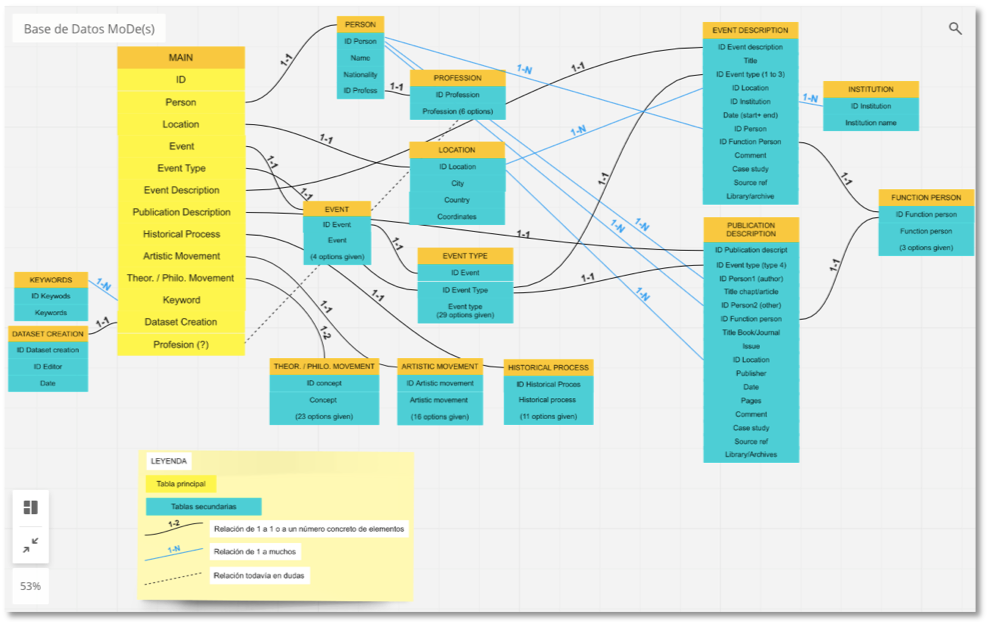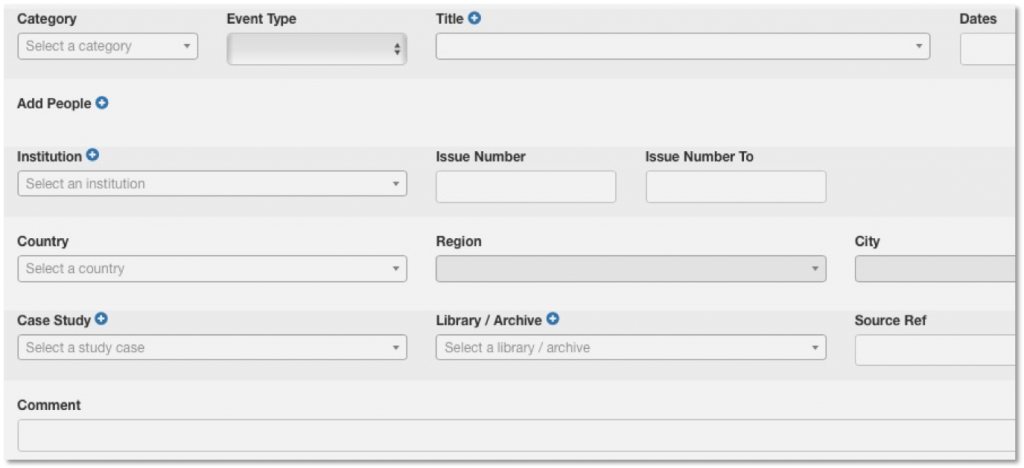MoDe(s) considers digital resources as a crucial complement to art historiography and its more traditional methods based on bibliographical, archival and field research. Our project examines circulation and exchange in the cultural field during the Cold War, as well as its interplays with social and political events.
How can new technologies serve our purpose and particular approach to a situated history of art, and also open new lines of exploration?
Two facets of MoDe(s)’ activity directly engage with technology and digital means: firstly, the Database conceived in the framework of the project and currently in use; secondly, the visualization of research data through Geographic Information Systems. This post focuses on the first one: the Database.
MoDe(s)’ Database
Since the project’s activation, we have been working on a Database meant to collect information from individual research projects and, thanks to a specific structure of insertion and organization, allow data crossings. The Database also had to allow data exportation to GIS (Geographic Information Systems).
In a first fase, (May-November 2015), we worked with a first basic database, consisting in an Excel table. After finding that it was confusing and made the data entry difficult, our conclusion was that we needed a relational database, with a friendly interface.

In a second fase, (December 2015 to March 2016), we worked on the elaboration of a Relational Database, consulting external experts, who helped us to elaborate a technical scheme. We finally selected a proposal adapted to our budget.
From April to July 2016 (third fase), two experts worked on the DB, created a friendly interface, that was tested and modified as necessary.


Besides the factual elements –title, date, author, location, reference–, one of the particularities of the DB is the presence of fields that are completed according to one’s own interpretation and approach. However, in order to favor thematic organization and data combinability, we elaborated some predetermined lists: Historic processes, Artistic movements, Theoretical and Philosophical concepts. We added two Keyword fields that can be either filled from a preexisting list or with new terms. All these fields are obligatory.
A search tool filters the records through a significant number of categories: title, year or period, keywords, city, publisher, date of publication, etc. We can export a specific search to a table format that facilitates the work with Geographic Information Systems. The database’s access is, for now, limited to members of MoDe(s).

Technical and methodological issues raised by the DB
Unlike Databases collecting objective information in order to proceed to quantitative analysis, MoDe(s)’ Database is characterized by the association of accurate historical and factual data about artistic events or productions, publications and historical occurrences with records requiring personal choices and interpretations.
It is in fact important to insist here on the fact that we do not proceed to a systematic insertion of data. The nature of the information and its qualification are subordinated to each researcher, and rely on his/her own lines of study and reflection.
In that sense, we do not pretend to display here an “objective” view, but rather a fragment based on the interpretation of a limited number of people. However, as it is based on scientific research with proper references and an exhaustive insertion of data, the DB is also rigorous and, to some extent and depending on its specific use, it can have a quantitative dimension.
Conclusion
In conclusion, let’s recall come questions we have faced over the process of building the Database: How to work with a structure able to collect and intersect different sorts of data, keeping its scientific validity but also the ability to articulate critical views? What kind of use can we make then with such a composite data? Can they be considered of scientific accuracy? How should the “subjective” categories be addressed? To what extent can this structure activate new connections and spaces of reflection?
* This post is a revised version of a paper presented in the framework of the IV International Meeting on Digital Art History and Artistic Culture (December 15th to 17th, 2016, Málaga).
